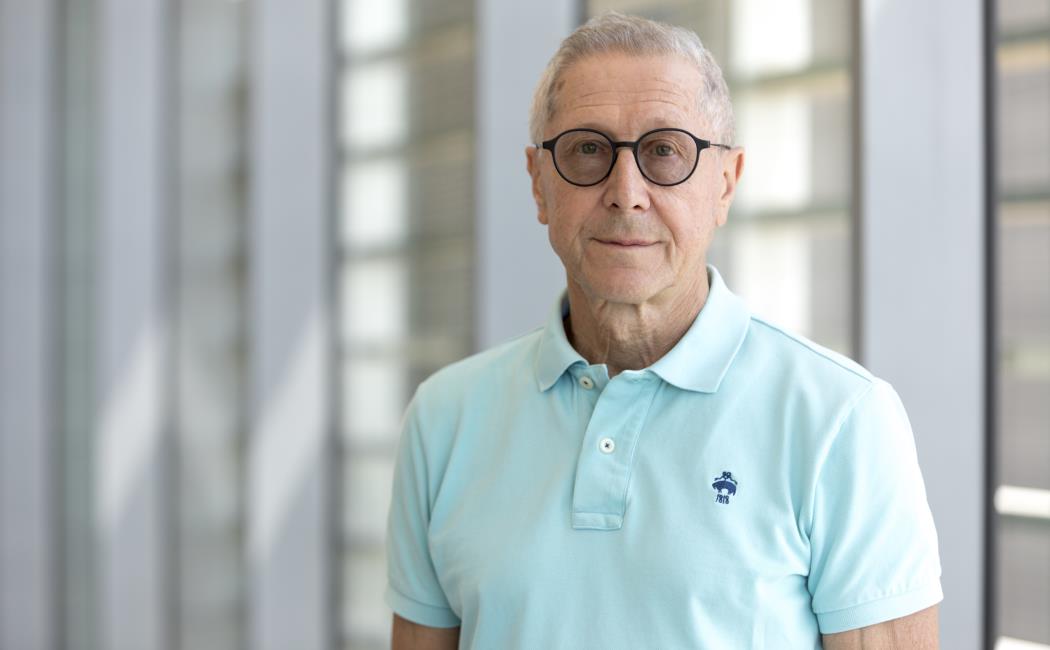
15 August, 2022
By David Murphy
The Future of Life Institute (FLI) has awarded KAUST Professor of Earth Science Georgiy Stenchikov the 2022 Future of Life Award for his research on the climatic consequences of nuclear war. The principal investigator of the KAUST Atmospheric and Climate Modeling (ATCM) Research Group is part of an esteemed group of fellow winners acknowledged for their work "reducing the risk of nuclear war by developing and popularizing the science of nuclear winter."
Fellow FLI 2022 Future of Life Award winners include the planetary scientist Carl Sagan, Nobel Prize Winner, meteorologist, and atmospheric chemist Paul Crutzen, atmospheric chemist John Birks, former U.N. Deputy Director of Public Information and External Relations Jeannie Peterson, climatologist Alan Robock, and atmospheric scientists Brian Toon and Richard Turco.
Founded in 2014 by MIT cosmologist Max Tegmark, founding engineer at Skype Jaan Tallinn, DeepMind research scientist Viktoriya Krakovna, Tufts University postdoctoral scholar Meia Chita-Tegmark, and University of California, Santa Cruz physicist Anthony Aguirre, the FLI is an independent non-profit organization dedicated to reducing the extreme risks associated with transformative technologies like nuclear power and artificial intelligence as well as guiding their development and application.
Professor Stenchikov received his award at a recent FLI event held on Saturday, August 6, 2022, the 77th anniversary of Hiroshima, the world's first atomic bombing.
"This work started a long time ago, but the scientific problems and collaboration with the scientists involved in these studies influenced my entire life," Stenchikov explained.
"Nuclear winter could also be called global aerosol catastrophe when soot particles from city fires ignited by nuclear explosions absorb the incoming solar radiation and cool the Earth's surface. But there are myriad other aerosols (natural and anthropogenic) in the atmosphere impacting radiation, atmospheric chemistry, and cloud processes. Strong dust storms are also aerosol catastrophes, just regional, not global. That is why aerosol chemistry and physics are so important in industry, climate science, and air quality," he added.
In the late 1970s, when Profesor Stenchikov began his career in science, the threat of an international nuclear conflict between global superpowers was a very real prospect. In 1982, Jeannie Peterson, the then editor of Ambio—a journal focused on highlighting key developments in environmental research published by the Royal Swedish Academy of Sciences—commissioned and published the first body of research investigating the ecological consequences of nuclear war. This included Crutzen and Birks' groundbreaking paper titled "The Atmosphere after a Nuclear War: Twilight at Noon."
A year later, in 1983, Crutzen and Birks' paper was followed by the ambitious study of American scientists known as the TTAPS study—from the initials of the last names of its authors, R.P. Turco, O.B. Toon, T.P. Ackerman, J.B. Pollack, and Carl Sagan. The TTAPS authors' seminal 1983 paper titled "Nuclear Winter: Global Consequences of Multiple Nuclear Explosions," introduced the nuclear winter hypothesis and coined the term "nuclear winter." The researchers, using a one-dimensional altitude-dependent radiative-convective model, found that if a nuclear event was to happen, the average global surface air temperature could drop by about 20º Celsius. A drop in temperature high enough to plunge the planet into what they called "nuclear winter"—a deadly period of darkness, famine, toxic gases, and subzero cold.
At the same time, in the Soviet Union, Stenchikov and his colleague Dr. Vladimir Aleksandrov at the Computer Center of the USSR Academy of Sciences conducted and published the first three-dimensional general circulation model simulation of climate perturbations following the hypothetical nuclear war based on TTAPS scenarios. Their model simulations confirmed the TTAPS findings about global average cooling and revealed the geographic distribution and duration of the impacts.
"This research clearly showed that one cannot win a nuclear war, as all, even non-combat countries will severely suffer from a nuclear winter, famine, and environmental degradation," Stenchikov noted.
Throughout his career, Stenchikov's research has significantly contributed to climate modeling, atmospheric physics, fluid dynamics, radiation transfer, and environmental sciences. In 2007, he co-authored the Nobel Prize-winning report from the Intergovernmental Panel on Climate Change (IPCC-AR4 of 2007).
In 1977, he graduated from the Moscow Institute of Physics and Technology with a Ph.D. in Numerical and Analytical Study of Weak Plasma Turbulence. He then headed a department at the Computer Center, where he and his colleagues studied how humans impact the climate and environment of the planet.
From 1992 until 1998, Stenchikov worked at the University of Maryland, U.S., after which he held a position as a research professor in the Department of Environmental Sciences of Rutgers University, U.S., for over a decade. In 2009, he joined KAUST as a founding professor and chaired the University's Earth Science and Engineering program for twelve years until 2021.
His research at KAUST uses the latest modeling techniques, combined with ground-based and satellite observations, to provide critical guidance on how the Saudi Arabian and neighboring governments should prepare for future climate and air quality shifts.
The ATCM's research goals include developing an improved climate forecast for the Arabian Peninsula to inform policymakers and advise on adaptation measures; assessing the wind and solar power resources; accounting for the degrading effect of dust deposited on solar panels; developing and evaluating models that can predict the effects of regional- to global-scale catastrophes and industrial failures on environmental systems.